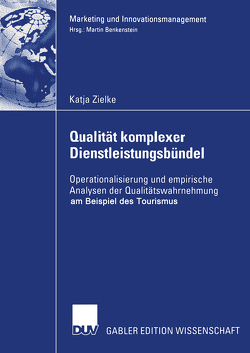Marketing und Verkauf im Objektgeschäft
Christian Belz, Michael Reinhold
Market segmentation is a well-known fundamental concept in marketing with a long research tradition. The basic concept of market segmentation involves dividing a heterogeneous group of prospective customers into smaller groups, where the characteristics of customers are homogenous within a group and heterogeneous between them. The overall aim is to be better able to customize a company’s of marketing activities and product offerings.
The development of market segmentation research over almost five decades has revealed an enormous variety of important topics for market segmentation. In 2003, a special interest group (SIG) of the Academy of Marketing was established as a platform for exchanging ideas and developing research in market segmentation and related issues. Within a short period of time, a large network of academics and practitioners has been established, enabling a rich and fruitful exchange of ideas and dissemination
of research findings.
On 29th June 2004 the first research day of this SIG was held at the Warwick Business School, University of Warwick. The day was aimed at academics and practitioners with a particular interest in market segmentation, targeting or positioning research and practice. Delegates were attracted from the UK, Germany, Switzerland and Brazil. Each delegate submitted an abstract describing planned, ongoing or
completed research. The abstracts are published in these proceedings.
The proceedings begin with an overview of current market segmentation research topics and future priorities by Dibb. This abstract discusses the changing shape of the segmentation research agenda, focusing on a study examining researchers’ views of the current priorities for market segmentation research. Dibb’s objective is to reopen the debate about the evolving segmentation research agenda, by emphasizing how segmentation research fits into the overall scheme of research priorities for
the marketing discipline.
Theoretical aspects of market segmentation are then discussed by Sausen. In a paper which argues that market segmentation success depends on a firm’s resources and capabilities, Sausen suggests that segmentation has only been superficially considered from a RBV view. He goes on to show why RBV and the concept of dynamic capabilities (CDC) are appropriate theories for explaining segmentation success. A way of operationalising the relevant constructs is then presented.
Other abstracts have been grouped into different tracks according to their topic. The first of these groups focuses on methods and processes for building segments.
These methods include the evaluation of latent class models (Wirth) an appliedoriented approach for data interpretation (Tonks) and an extension of the Mosaic model (Tapp). In the first paper, Wirth focuses on the assumed robustness to scaling problems of finite mixture models. His argument is that the flexibility of these models Proceedings of SIG Market Segmentation Research Seminar 3 draws attention away from scaling problems at the individual level. Using a simulation study of data with known segment structure, Wirth shows the effects of what he terms ‘high’ and ‘low raters’ (respondents who tend to tick at the high or low ends of scales). The abstract by Tonks critically addresses the choice of variables for multivariate segmentation. He also explores methods for identifying the resulting segments, focusing particularly on qualitative judgements which may be made about the resulting output. Tonks suggests that the choice of segmentation variables is often not self-evident, even though well recognized criteria have been laid down for evaluating the resulting segments. He goes on to explain the many reasons for variable choice, ranging from convention and data availability through to more arbitrary approaches. Tapp’s paper considers the potentially far-reaching effects of social changes on marketing and on commercial and public policy. His argument is that traditional segmentation approaches may break down as a result of the fragmentation of society and the macro forces driving them. Tapp is particularly interested in whether and how these complexities can be linked into existing geodemographic data.
The second group of papers concentrates on bases and variables used to build appropriate segments for specific contexts. They investigate segmentation issues for time-sensitive products (Dacko), ethnic segmentation (Lindridge), segmentation in the heritage market (Misiura) and positioning in the insurance industry (Arnott).
Dacko’s paper introduces chronographic segmentation: segmentation based on consumers’ systematic temporal purchase preferences. By considering the chronographic approach within the context of a discussion on base variables, Dacko demonstrates how this time-based approach is distinct in its own right. A research agenda for chronographic segmentation is presented. In Lindridge’s paper, the increasing complexities facing marketers targeting ethnic minorities are highlighted. He argues that identifying segments based on race is problematic. Focusing on South Asians, he considers the use of culture, language, religion, and degree of acculturation as segmentation variables. Lindridge concludes that there remains a challenge for marketers:
to develop meaningful segmentation schemes for a group which is both ready
to engage in aspects of White culture, while wishing to retain parts of its Indian heritage.
Misiura concentrates on the increasing attention being devoted to heritage consumer marketing. Her abstract explores the rising professionalism of marketing in this area and discusses ways in which the market can be segmented. The final paper in this group is Arnott’s examination of positioning in financial services. In it, he argues that the often quoted attributes of positioning (important, distinctive, superior,
communicable, preemptive, affordable and profitable) suggest that positioning can be maintained long-term. In reality, Arnott contends that in today’s dynamic markets, continual investment is needed simply to sustain a positioning relative to competitors.
A third group of abstracts picks up the problems companies face in implementing market segmentation. Two implementation processes are presented (Simkin; Wirth and Bendzko) and critical implementation issues are analyzed (Fifield). Simkin’s paper contends that many B2B organisations classify their customers into groups on 4 Proceedings of SIG Market Segmentation Research Seminar the basis of clients’ industry sectors, or by product groups. This approach, he argues, can result in segments which do not discriminate in terms of purchasing behaviour or customer needs. To counter this problem, and to deal with the fact that it may be unrealistic for such organizations to radically alter the existing status quo, Simkin introduces a straightforward six-stage evolutionary segmentation process. The abstract
by Wirth and Bendzko explains that many useful evaluative criteria have been suggested to help researcher judge the quality of their market segments. However, they highlight the different needs and interests of academics and practitioners in this regard. The authors’ abstract describes attempts to bridge the gap they see between segmentation related marketing questions, research techniques and project management.
In particular, they discuss the establishment of a discussion group involving statisticians, consultants and their clients, designed to investigate how current segmentation approaches might be improved.
In Fifield’s paper a methodology for meeting clients’ segmentation needs is explained.
This six-stage approach, which the author describes as both robust and technically valid, has been implemented with a wide range of clients. Fifield goes on to look at various ways for ‘populating’ business to business segments. These include examining correlations with descriptor variables and using some or all of the questions which initially defined the segments as a screening mechanism for the
sales force to use.
The special issue ends with the presentation of a synoptic piece by Wensley, reflecting on the contrasting perspectives of academics and practitioners on market segmentation research.
The extended abstracts presented in these proceedings underline the importance of
market segmentation. They also demonstrate future research priorities from both an
academic and practitioner perspective. Far from being at opposite extremes, one of
the surprises has been the overlap in concerns and priorities for the two groups. We
would like to thank all of the authors for their contribution to these proceedings as
well as to the lively and vibrant discussions at the research day itself.
























